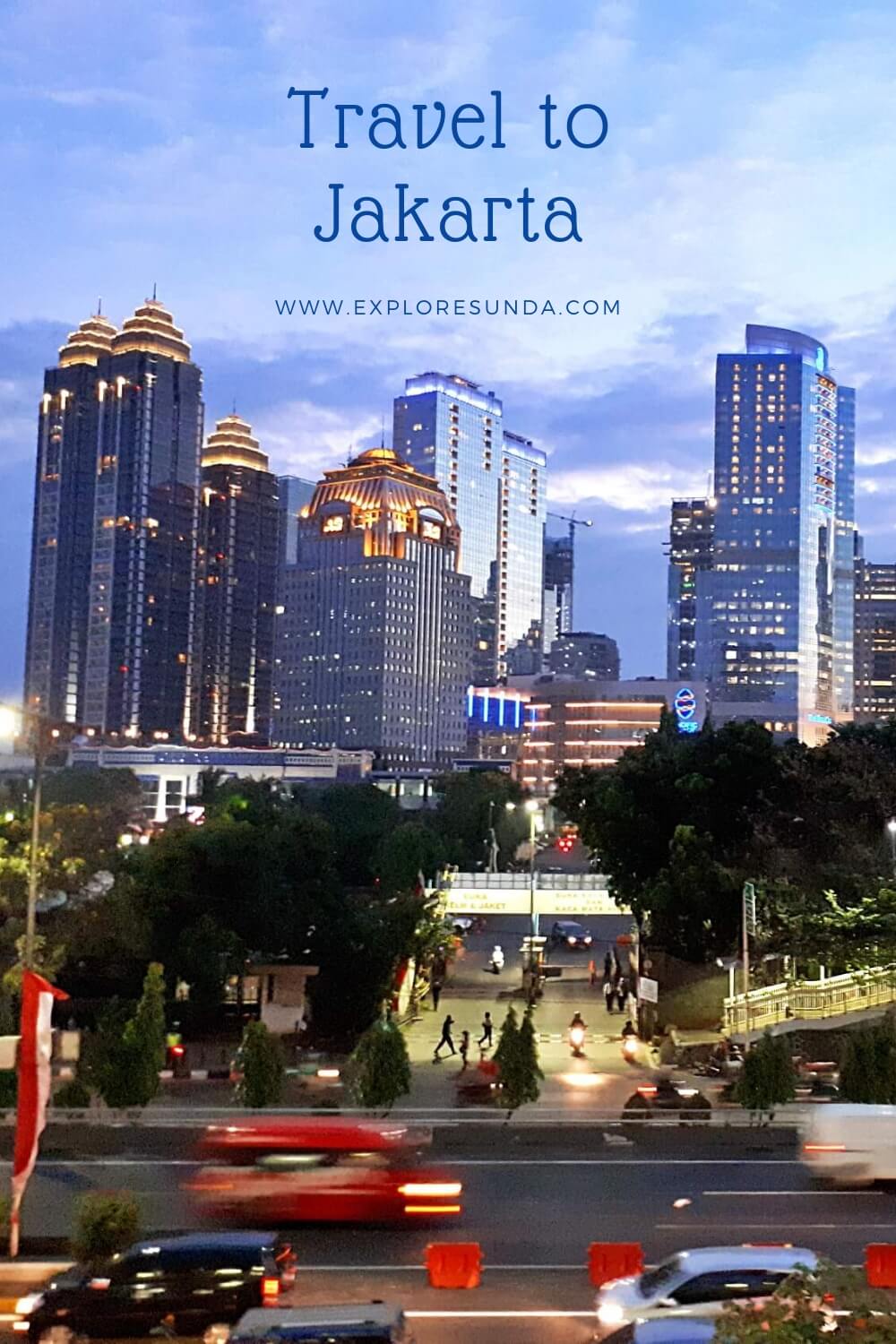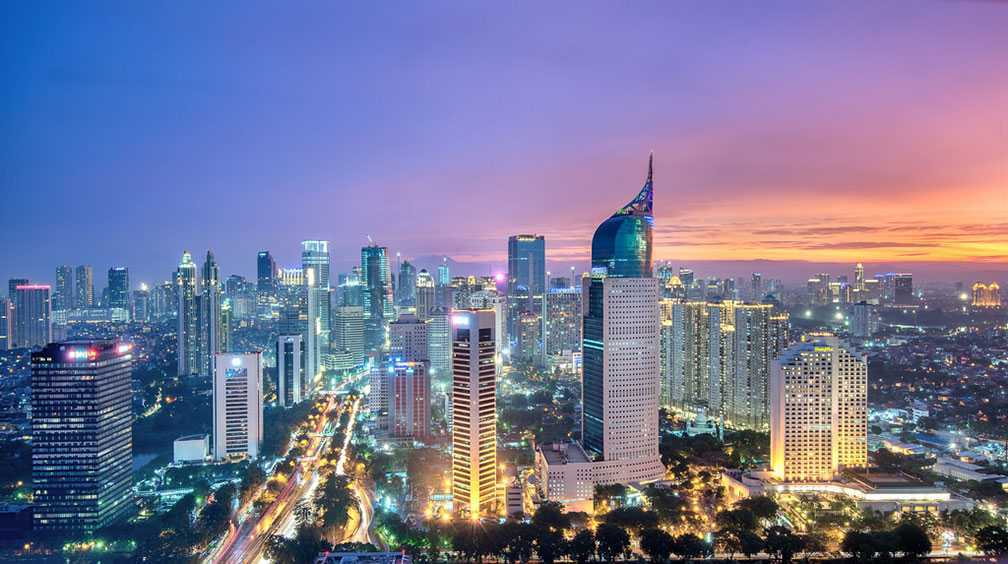
Jakarta, the pulsating heart of Indonesia, is a city that defies easy categorization. A sprawling metropolis where ancient traditions meet hyper-modernity, it’s a sensory explosion of bustling markets, towering skyscrapers, colonial architecture, and a culinary scene that will tantalize your taste buds. From its rich historical tapestry to its vibrant contemporary energy, Jakarta offers a unique and unforgettable travel experience. This comprehensive guide will equip you with everything you need to navigate this captivating city, from its must-see attractions and fascinating history to practical travel tips, accommodation choices, and the best times to visit.
A Glimpse into Jakarta’s Storied Past
Jakarta’s history is a layered narrative, shaped by centuries of trade, colonization, and independence. Its origins can be traced back to the 4th century as a port city called Sunda Kelapa, a vital hub for the Sundanese kingdom. In 1527, Fatahillah, a Javanese general, conquered the city and renamed it Jayakarta, meaning "victorious deed." This date, June 22nd, is still celebrated as Jakarta’s anniversary.

Related Articles about Jakarta: A Metropolis Unveiled – Your Comprehensive Guide to Exploring Indonesia’s Vibrant Capital:
- Germany: A Tapestry of History, Culture, and Unforgettable Attractions
- The Concrete Jungle Where Dreams Are Made Of: Your Ultimate Travel Guide to New York City
- Buenos Aires: A Symphony of Passion, History, and Vibrant Culture
- Nepal: A Journey to the Roof of the World and Beyond
- Paradise Found: Your Ultimate Guide to the Best Hotels and Experiences in the Maldives
The Dutch East India Company (VOC) arrived in the early 17th century, recognizing the strategic importance of the port. They captured Jayakarta in 1619, renaming it Batavia and transforming it into the administrative and commercial center of their vast colonial empire in the East Indies. For over three centuries, Batavia was the seat of Dutch power, leaving an indelible mark on the city’s architecture, infrastructure, and social fabric. You can still witness this legacy in the well-preserved buildings of Kota Tua (Old Town).
During World War II, Japan occupied Batavia briefly before Indonesia declared its independence in 1945. The city, then known as Jakarta, became the capital of the newly formed Republic of Indonesia. Since then, Jakarta has undergone rapid development, evolving into the sprawling megacity it is today, a testament to its resilience and ambition.
Unveiling Jakarta’s Top Attractions
Jakarta offers a diverse array of attractions catering to every interest. Immerse yourself in its history, marvel at its modern marvels, and indulge in its vibrant culture.
-
Kota Tua (Old Town): Step back in time in this beautifully preserved colonial district. Wander through charming cobblestone streets, admire Dutch-era buildings, and soak in the atmosphere of bygone days. Key highlights include:
- Fatahillah Square: The heart of Kota Tua, surrounded by historical buildings like the Jakarta History Museum (Museum Fatahillah) housed in the former Town Hall, the Wayang Museum (showcasing traditional Indonesian puppets), and the Museum of Fine Arts and Ceramics.
- Gedung Arsip Nasional (National Archives Building): An impressive example of Dutch colonial architecture.
- Sunda Kelapa Port: Still an active traditional port, where you can witness the iconic Phinisi schooners, offering a glimpse into traditional maritime life.

-
Monas (National Monument): This iconic obelisk, standing proudly in Merdeka Square, is a symbol of Indonesia’s independence struggle. Climb to the top for panoramic views of the city, and visit the museum at its base to learn about Indonesia’s history.
-
Istiqlal Mosque: The largest mosque in Southeast Asia, a magnificent architectural masterpiece that can accommodate over 200,000 worshippers. Its grand dome and minaret are an impressive sight, and visitors are welcome to explore its serene interiors (dress respectfully).
-
Jakarta Cathedral: Located directly opposite Istiqlal Mosque, this beautiful Catholic cathedral stands as a testament to religious harmony in Indonesia.
-
Ancol Dreamland: A sprawling entertainment complex offering a wide range of attractions for families and thrill-seekers. It features a theme park (Dufan), a water park (Atlantis Water Adventure), an aquarium (Sea World Ancol), a bird park, and a marina.
-
Taman Mini Indonesia Indah (TMII – Miniature Park of Indonesia): This expansive park showcases Indonesia’s diverse culture and architecture. Each pavilion represents a different province, featuring traditional houses, costumes, and cultural performances. It’s an excellent way to experience the archipelago’s vastness in one place.
-
National Museum of Indonesia: Home to an extensive collection of artifacts and artworks, offering insights into Indonesia’s rich history, culture, and ethnography.
-
Shopping Malls: Jakarta is a shopper’s paradise. From luxury brands to local crafts, you’ll find it all. Popular malls include Grand Indonesia, Plaza Indonesia, Pacific Place, and Senayan City. For a more traditional shopping experience, explore Pasar Baru for textiles and souvenirs, or Glodok Electronic City for electronics.
-
Culinary Delights: Jakarta’s food scene is legendary. Don’t miss trying local specialties like Nasi Goreng (fried rice), Sate (grilled skewers), Gado-Gado (vegetable salad with peanut sauce), and Soto Ayam (chicken soup). Explore street food stalls, traditional warungs (eateries), and upscale restaurants to savor the diverse flavors.
Navigating Jakarta: Transportation Tips
Getting around Jakarta can be an adventure in itself, but with a little planning, you can navigate its busy streets effectively.
- Taxis: Metered taxis are widely available. Use reputable companies like Blue Bird or Silver Bird for a reliable and safe experience. Always ensure the meter is on.
- Ride-hailing Apps: Grab and Gojek are ubiquitous and offer a convenient and affordable way to travel. You can book cars, motorcycles, and even food delivery.
- TransJakarta Bus Rapid Transit (BRT): This extensive bus system is an economical way to travel between major areas. Routes are well-defined, and it’s a good option to avoid traffic congestion.
- MRT (Mass Rapid Transit): Jakarta’s new MRT line offers a fast and efficient way to travel between key business and commercial districts. It’s a welcome addition to the city’s public transport network.
- Commuter Trains (KRL Commuter Line): For longer distances or to reach surrounding areas, the KRL network is a viable option.
- Motorcycle Taxis (Ojek): For short distances and to weave through traffic, motorcycle taxis are a popular choice, especially via ride-hailing apps.
Traffic: Be prepared for significant traffic congestion, especially during peak hours. Factor this into your travel time.
Accommodation Options: From Budget to Luxury
Jakarta offers a wide spectrum of accommodation to suit every budget and travel style.
- Luxury Hotels: Jakarta boasts world-class hotels offering impeccable service, stunning city views, and luxurious amenities. Brands like The Ritz-Carlton, Mandarin Oriental, Four Seasons, and Shangri-La are excellent choices for a lavish stay.
- Mid-Range Hotels: You’ll find a plethora of comfortable and well-equipped mid-range hotels, often featuring modern amenities like swimming pools and on-site restaurants. These are great for travelers seeking comfort without breaking the bank.
- Boutique Hotels: For a more unique and personalized experience, consider Jakarta’s boutique hotels, often housed in charming colonial buildings or offering distinct design elements.
- Budget Hotels and Hostels: Travelers on a tight budget will find numerous guesthouses and hostels offering affordable dormitory beds or private rooms. These are great for meeting other travelers and experiencing a more local vibe.
- Serviced Apartments: For longer stays or families, serviced apartments provide the convenience of a home away from home, with kitchens and separate living areas.
Popular Areas to Stay:
- Central Jakarta: Ideal for business travelers and those wanting easy access to major attractions, shopping malls, and government offices.
- South Jakarta (e.g., Kemang, Senopati): Known for its vibrant nightlife, trendy restaurants, cafes, and upscale boutiques.
- West Jakarta (e.g., Kota Tua area): If you’re interested in history and want to be close to the Old Town, this is a good option.
The Best Time to Visit Jakarta
Jakarta experiences a tropical climate with two main seasons:
- Dry Season (June to September): This is generally considered the best time to visit. The weather is drier, with less humidity and more sunshine, making it ideal for outdoor exploration. Temperatures are consistently warm, averaging around 28-32°C (82-90°F).
- Wet Season (October to May): Characterized by higher humidity and frequent rainfall. While it can rain heavily, showers are often short-lived, and you can still enjoy your trip. The rain can bring relief from the heat, and you might find better deals on accommodation during this period.
Considerations:
- Festivals and Events: Jakarta hosts numerous festivals and cultural events throughout the year. Research if any coincide with your visit, as they can add a unique dimension to your experience.
- Ramadan: If you visit during Ramadan, be mindful of local customs. Many restaurants may have altered hours, and it’s respectful to avoid eating or drinking openly in front of fasting Muslims.
Essential Travel Tips for Jakarta
To ensure a smooth and enjoyable trip to Jakarta, keep these practical tips in mind:
- Visa Requirements: Check the visa requirements for your nationality well in advance of your travel.
- Currency: The local currency is the Indonesian Rupiah (IDR). ATMs are widely available, and credit cards are accepted in most hotels, malls, and larger restaurants.
- Language: The official language is Bahasa Indonesia. While English is spoken in tourist areas, hotels, and by many younger Indonesians, learning a few basic Indonesian phrases will be greatly appreciated.
- Health and Safety:
- Vaccinations: Consult your doctor about recommended vaccinations for Indonesia.
- Water: Drink bottled water only. Avoid ice in drinks unless you are sure it’s made from purified water.
- Food: Eat at reputable establishments. Street food can be delicious but exercise caution and choose vendors with high turnover.
- Scams: Be aware of common tourist scams, especially in crowded areas. Be wary of unsolicited help or offers that seem too good to be true.
- Traffic Safety: Be extremely cautious when crossing streets.
- Dress Code: Indonesia is a Muslim-majority country. While Jakarta is relatively liberal, it’s advisable to dress modestly, especially when visiting religious sites. For women, covering your shoulders and knees is generally recommended.
- Connectivity: SIM cards are readily available and affordable at the airport or local mobile stores. Wi-Fi is common in hotels and cafes.
- Bargaining: Bargaining is common in traditional markets and with street vendors. Be polite and have a price in mind before negotiating.
- Etiquette: Indonesians are generally polite and respectful. Avoid public displays of affection and always use your right hand when giving or receiving anything.
- Tipping: Tipping is not mandatory but is appreciated for good service in restaurants and for hotel staff.
Embracing the Jakarta Experience
Jakarta is a city that will challenge your perceptions and reward your curiosity. It’s a place of contrasts, where the echoes of its colonial past mingle with the dynamism of its modern present. From the historical grandeur of Kota Tua to the futuristic allure of its skyscrapers, from the spiritual serenity of its mosques to the vibrant chaos of its markets, Jakarta offers a multifaceted experience.
Embrace the energy, savor the flavors, and immerse yourself in the warmth of its people. With this comprehensive guide as your companion, you are well-equipped to embark on an unforgettable journey into the heart of Indonesia’s captivating capital. Jakarta awaits, ready to unveil its secrets and leave you with lasting memories.





